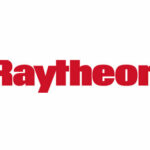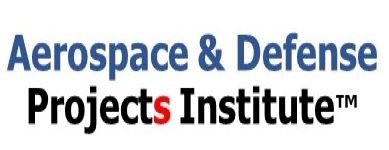GE AVIATION
GE Aviation
Jump to navigationJump to search
 |
|
| Formerly | General Electric Aircraft Engines |
|---|---|
| Type | Subsidiary |
| Industry | Aerospace |
| Founded | 1917[1] |
| Headquarters |
, |
|
Key people
|
John S. Slattery (President & CEO) |
| Products | Aircraft engines Avionics |
| Revenue | – Equipment :: |
|
Number of employees
|
48,000 (2018) |
| Parent | General Electric |
| Subsidiaries | GE Aviation Systems[4] Walter Aircraft Engines[5] GE Honda Aero Engines (50%) CFM International (50%) Engine Alliance (50%) Aviage Systems (50%) Dowty Propellers (100%) Avio Aero SpA (100%) CFM Materials (50%) XEOS(49%) Advanced Ceramic Coatings (50%) |
| Website | www |
GE Aviation, a subsidiary of General Electric, is headquartered in Evendale, Ohio, outside Cincinnati. GE Aviation is among the top aircraft engine suppliers, and offers engines for the majority of commercial aircraft. GE Aviation is part of the General Electric conglomerate, which is one of the world’s largest corporations. The division operated under the name of General Electric Aircraft Engines (GEAE) until September 2005. GE Aviation’s main competitors in the engine market are Rolls-Royce and Pratt & Whitney. GE operates two joint ventures with Safran Aircraft Engines of France, CFM International and CFM Materials.
History[edit]
Early efforts[edit]
General Electric had a long history in steam turbine work, dating back to the 1900s. In 1903 they hired Sanford Alexander Moss, who started the development of turbosuperchargers at GE. This led to a series of record-breaking flights over the next ten years. At first, the role of the high-altitude flight was limited, but in the years immediately prior to WWII they became standard equipment on practically all military aircraft. GE was a world leader in this technology; most other firms concentrated on the mechanically simpler supercharger driven by the engine itself, while GE had spent considerable effort developing the exhaust-driven turbo system that offered higher performance.
This work made them the natural industrial partner to develop jet engines when Frank Whittle‘s W.1 engine was demonstrated to Hap Arnold in 1941.[6] A production license was arranged in September, and several of the existing W.1 test engines shipped to the US for study, where they were converted to US manufacture as the I-A. GE quickly started production of improved versions; the I-16 was produced in limited numbers starting in 1942, and the much more powerful I-40 followed in 1944, which went on to power the first US combat-capable jet fighters, the P-80 Shooting Star.
Early jet engine work took place at GE’s Syracuse, NY (steam turbine) and Lynn, MA (supercharger) plants, but soon concentrated at the Lynn plants.[7] On 31 July 1945 the Lynn plant became the “Aircraft Gas Turbine Division”. GE was repeatedly unable to deliver enough engines for Army and Navy demand, and production of the I-40 (now known as the J33) was also handed to Allison Engines in 1944. After the war ended, the Army canceled its orders for GE-built J33s and turned the entire production over to Allison,[8] and the Syracuse plant closed.
Military and civilian expansion[edit]
These changes in fortune led to debate within the company about carrying on in the aircraft engine market. However, the engineers at Lynn pressed ahead with the development of a new engine, the TG-180, which was designated J35 by the US military.[9]
Development funds were allotted in 1946 for a more powerful version of the same design, the TG-190. This engine finally emerged as the famed General Electric J47, which saw a great demand for several military aircraft; a second manufacturing facility near Cincinnati was opened. J47 production ran to 30,000 engines by the time the lines closed down in 1956. Further development of the J47 by Patrick Clarke in 1957 led to the J73, and from there into the much more powerful J79. The J79 was GE’s second “hit”, leading to a production run of 17,000 in several different countries. The GE and Lockheed team that developed the J79 and the F-104 Mach 2 fighter aircraft received the 1958 Collier Trophy for outstanding technical achievement in aviation. Other successes followed, including the T58, and T64 turboshaft engines, J85 and F404 turbojets.
The TF39 was the first high-bypass turbofan engine to enter production.[10] Entered into the C-5 Galaxy contest in 1964 against similar designs from Curtiss-Wright and Pratt & Whitney, GE’s entry was selected as the winner during the final down-select in 1965. This led to a civilian model, the CF6,[11] which was offered for the Lockheed L-1011 and McDonnell Douglas DC-10 projects. Although Lockheed later changed their engine to the Rolls-Royce RB211, the DC-10 continued with the CF6, and this success led to widespread sales on many large aircraft including the Boeing 747.
Another military-to-civilian success followed when GE was selected to supply engines for the S-3 Viking and Fairchild Republic A-10 Thunderbolt II, developing a small high-bypass engine using technologies from the TF39. The resulting TF34 was adapted to become the CF34, whose wide variety of models powers many of the regional jets flying today.[12]
In the early 1970s, GE was also selected to develop a modern turboshaft engine for helicopter use, the T700. It has been further developed as the CT7 turboprop engine for regional transports.
Commercial aviation powerplants[edit]
In 1974 GE entered into an agreement with Snecma of France, forming CFM International to jointly produce a new mid-sized turbofan, which emerged as the CFM56. A 50/50 joint partnership was formed[13] with a new plant in Evendale, OH to produce the design. At first, sales were very difficult to come by, and the project was due to be canceled. Only two weeks before this was to happen, in March 1979, several companies selected the CFM56 to re-engine their existing Douglas DC-8 fleets.[14] By July 2010, CFM International had delivered their 21,000th engine of the CFM56 family, with an ongoing production rate of 1250 per year, against a four-year production backlog.[15]
The success of the CFM led GE to join in several similar partnerships, including Garrett AiResearch for the CFE CFE738, Pratt & Whitney on the Engine Alliance GP7000, and, more recently, Honda for the GE Honda Aero Engines small turbofan project. GE also continued the development of its own lines, introducing new civilian models like the GE90, and military designs like the General Electric F110.
GE Aviation today[edit]
Then-GEAE (and competitor Rolls-Royce) were selected by Boeing to power its new 787. GE Aviation’s offering is the GEnx, a development of the GE90. GE Aviation also has a two-year exclusivity on the Boeing 747-8.
The Lynn facility continues to assemble jet engines for the United States Department of Defense, subsidiary services, and commercial operators. Engines assembled at this plant include the F404, F414, T700, and CFE738. The plant at Lynn also produces the -3 and -8 variants of the CF34 regional jet engine, the CT7 commercial turboprop power plant, and commercial versions of the T700 turboshaft which are also called the CT7.
The Evendale plant conducts final assembly for the CFM International’s CFM56, CF6, as well as LM6000, and LM2500 power plants.
A GEnx engine installed on the Boeing 787-9 Dreamliner
The Durham, North Carolina, facility conducts final assembly for the LEAP-X, GEnx, CFM56, GE90, GP7200, and CF34 power plants. Crucial parts for these engines are crafted in secondary GE Aviation facilities, such as those in Bromont, Quebec; Hooksett, New Hampshire; Wilmington, North Carolina; Madisonville, Kentucky; Rutland, Vermont; and Muskegon, Michigan; where the engine blades and vanes are manufactured.
Smiths Group and General Electric announced on January 15, 2007, that the former was divesting Smiths Aerospace to the latter for GBP£2.4 billion (US$ 4.8 billion).[16] GE Aviation closed the transaction on May 4, 2007.[4] Smiths Aerospace, which was an important supplier, became an operating subsidiary of GE Aviation known as GE Aviation Systems. This acquisition will reportedly give the combined unit the clout to resist pricing pressures from its two largest customers, Boeing Commercial Airplanes and EADS/Airbus.[16] Analysts further assert that it enables General Electric to acquire assets similar to those it desired in its failed bid for Honeywell in 2000.[16]
Along with the purchase of Smiths Aerospace, the purchase included opening the first University Development Center at Michigan Technological University in Houghton, Michigan, in the effort to work with engineering students to provide training in engineering and software development. The program has performed well and GE Aviation has announced further UDC openings at Kansas State University. In July 2008, governments in the Persian Gulf reached agreements with GE to expand engine maintenance operations there. The Wall Street Journal reported that Mubadala Development Company, which owns Abu Dhabi Aircraft Technologies, an overhaul, and maintenance company, signed an agreement worth an estimated $8 billion with GE; Abu Dhabi Aircraft Technologies will maintain and overhaul GE engines used in commercial aircraft purchased by airlines based in the Persian Gulf.[17]
On December 23, 2012, GE announced that it has agreed to purchase the aviation business of Avio S.p.A., an Italy-based manufacturer of aviation propulsion components and systems for civil and military aircraft, for $4.3 billion U.S. (EUR3.3 billion).[18]
GE Aviation follows through to develop a supersonic engine concept for Aerion with a configuration accommodating reasonably well requirements for supersonic speed, subsonic speed and noise levels.[19]
Additive manufacturing[edit]
Recently, they have started incorporating 3D printing technologies in their engines and have incorporated the manufacturing process in the newly designed GE9X, the largest jet engine in the world.[20]
GE acquired Arcam EBM for electron beam melting, Concept Laser for laser melting, and material provider AP&C. Metal casting improves through competition with metal additive manufacturing, for which GE Additive believes it will soon compete with metal forging which will then be enhanced in response. Additive manufacturing is focused on new builds but can be used for part replacement: when complexity rise, costs stays level like replacing a 300 parts turbine frame in one-piece. The electron beam melting has good speed for economy, precision to reduce processing work, and size capability for larger parts; the hot process reduces stresses in the part and penetrates deeper than laser for thicker parts with coarser, cheaper metal powders. Additive techniques can be used across the engine and even in the over 1,500 °F (820 °C) hot section. They are used in the CT7 combustor liner, for GE9X low pressure turbine blades – the first rotating parts – and for 16 parts in the ATP, including an 80 parts heat exchanger consolidated into one.[21]
Products[edit]
Turbojets[edit]
| Model name | Configuration | Power |
|---|---|---|
| General Electric I-A | Turbojet | 1,250 lbf |
| General Electric J31 | Turbojet | 1,650 lbf |
| General Electric J33 | Turbojet | 4,600 lbf |
| General Electric J35 | Turbojet | 5,600 lbf |
| General Electric J47 | Turbojet | 5,970 lbf |
| General Electric J79 | Turbojet | 11,870 lbf |
| General Electric CJ805 | Turbojet | 11,650 lbf |
| General Electric J85 | Turbojet | 2,400 to 5,000 lbf |
| General Electric CJ610 | Turbojet | 3,100 lbf |
Turbofans[edit]
| Model name | Configuration | Power |
|---|---|---|
| General Electric CJ805-23 | Turbofan | 11,650 lbf |
| General Electric CF700 | Turbofan | 4,200 lbf |
| General Electric TF39 | Turbofan | 43,300 lbf |
| General Electric CF6 | Turbofan | 41,500 lbf |
| General Electric F101 | Turbofan | 17,390 lbf |
| General Electric TF34 | Turbofan | 9,275 lbf |
| General Electric CF34 | Turbofan | 9,220 lbf |
| General Electric F404 | Turbofan | 11,000 lbf |
| CFM International CFM56 | Turbofan | 24,000 to 21,580 lbf |
| General Electric F110 | Turbofan | 17,155 lbf |
| General Electric F118 | Turbofan | 19,000 lbf |
| General Electric YF120 | Turbofan | 23,500 lbf |
| CFE CFE738 | Turbofan | 5,900 lbf |
| General Electric GE90 | Turbofan | 81,000 to 115,000 lbf |
| General Electric F414 | Turbofan | 13,000 lbf |
| GE Honda HF120 | Turbofan | 2,050 lbf |
| General Electric/Rolls-Royce F136 | Turbofan | 25,000 lbf |
| Engine Alliance GP7200 | Turbofan | 81,500 lbf |
| General Electric GEnx | Turbofan | 69,800 lbf |
| CFM International LEAP | Turbofan | 32,160 lbf |
| General Electric Passport | Turbofan | 17,745 to 18,920 lbf |
| General Electric GE9X | Turbofan | 110,000 lbf |
| General Electric Affinity | Turbofan | 16,000 to 20,000 lbf |
Turboprops[edit]
| Model name | Configuration | Power |
|---|---|---|
| General Electric T31 | Turboprop | 2,300 hp |
| General Electric T700 | Turboprop | 1,735 hp |
| General Electric H80 | Turboprop | 800 hp |
| General Electric Catalyst | Turboprop | 1,300 hp |
Propfans[edit]
| Model name | Configuration | Power |
|---|---|---|
| General Electric GE36 | Propfan | 25,000 lbf |
Turboshafts[edit]
| Model name | Configuration | Power |
|---|---|---|
| General Electric T58 | Turboshaft | 1,250 hp |
| General Electric T64 | Turboshaft | 4,330 hp |
| General Electric T700 | Turboshaft | 1,622 hp |
| General Electric GE38 | Turboshaft | 7,500 hp |
Vehicle Propulsion[edit]
| Model name | Configuration | Power |
|---|---|---|
| GE/Honeywell LV100 |
Industrial aero-derivative and marine propulsion[edit]
| Model name | Configuration | Power |
|---|---|---|
| LM500 | Gas turbine | 4.5 MW |
| LM1500 | Gas turbine | 7.4 MW |
| LM1600 | Gas turbine | 15 MW |
| LM2500 | Gas turbine | 25 to 35 MW |
| LM5000 | Gas turbine | 35 MW |
| LM6000 | Gas turbine | 41 to 52 MW |
| LM9000 | Gas turbine | 65 MW |
| LMS100 | Gas turbine | 100 MW |
See also[edit]
References[edit]
- Notes
- ^ “GE Aviation: History Archived 2013-10-04 at the Wayback Machine.” GE Aviation website.
- ^ “GE Aviation: Facilities Archived 2011-10-19 at the Wayback Machine.” GE Aviation website.
- ^ Jump up to:a b “2018 Annual Report” (PDF). Annualreports.com.
- ^ Jump up to:a b “GE Aviation Completes Acquisition of Smiths Aerospace Archived 2007-10-31 at the Wayback Machine.” Smiths Aerospace press release. May 4, 2007.
- ^ “GE Takes On Jet-Engine Rival.” The Wall Street Journal. July 3, 2008.
- ^ Leyes, p. 237
- ^ Leyes, p. 238
- ^ “History of Allison Gas Turbine Division – FundingUniverse”. www.fundinguniverse.com.
- ^ “The Development of Jet and Turbine Engines” Bill Gunston 2006, 4th edition, Patrick Stephens, ISBN 0-7509-4477-3, p.143
- ^ “The CF6 Engine Family” Archived 2011-09-04 at the Wayback Machine
- ^ Neumann 2004, pp. 229–230
- ^ The CF34 Engine Family
- ^ Neumann 2004, p. 234
- ^ “The CFM Timeline” Archived 2010-03-23 at the Wayback Machine
- ^ GEAviation.com Press Release, CFM Delivers 21,000th CFM56 Engine While Retaining Solid Delivery Backlog, released November 16, 2010
- ^ Jump up to:a b c “Smiths To Sell Aerospace Ops To GE For $4.8B[dead link].” McGrath, S.; Stone, R. The Wall Street Journal. January 15, 2007.
- ^ Mideast Widens Aircraft Ventures, Wall Street Journal, July 30, 2008, p. B2.
- ^ “GE Announces purchase of Avio S.p.A“
- ^ Stephen Trimble (10 Oct 2017). “GE nears milestones on $1.5B bet on business aircraft”. Flightglobal.
- ^ Scott, Clare. “GE Aviation Tests the Largest Jet Engine in the World, Featuring 3D Printed Fuel Nozzles”, 3D Print, 25 April 2016. Accessed 16 May 2016.
- ^ Henry Canaday (Dec 11, 2017). “Additive Manufacturing Could Disrupt”. Aviation Week Network.
- Bibliography
- Leyes II, Richard A.; Fleming, William A. (1999), “10”, The History of North American Small Gas Turbine Aircraft Engines, Washington, DC: Smithsonian Institution, p. 725, ISBN 978-1-56347-332-6, retrieved 2011-07-04
- Neumann, Gerhard (2004), Herman the German: Just Lucky I Guess, Bloomington, IN, USA: Authorhouse, ISBN 978-1-4184-7925-1
External links[edit]
- Official website

- GE Aviation YouTube channel
- Aviage Systems Web site
- Guy Norris. “GE at 100: Taking Power to the Skies Aviation Week & Space Technology”. Aviation Week & Space Technology.
- Guy Norris (Jul 11, 2019). “GE Aviation At 100: Milestone Engines And People”. Aviation Week & Space Technology.
 Raytheon
Raytheon











